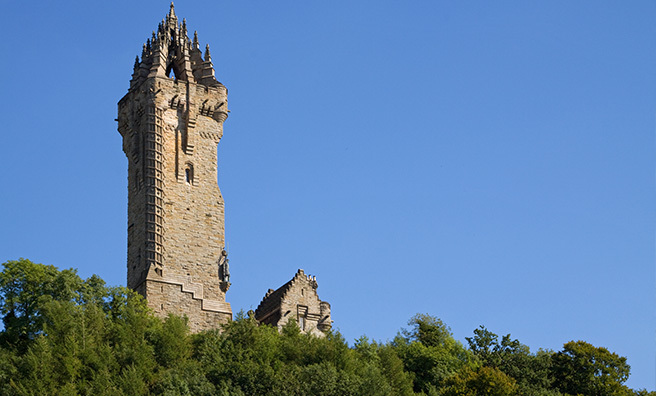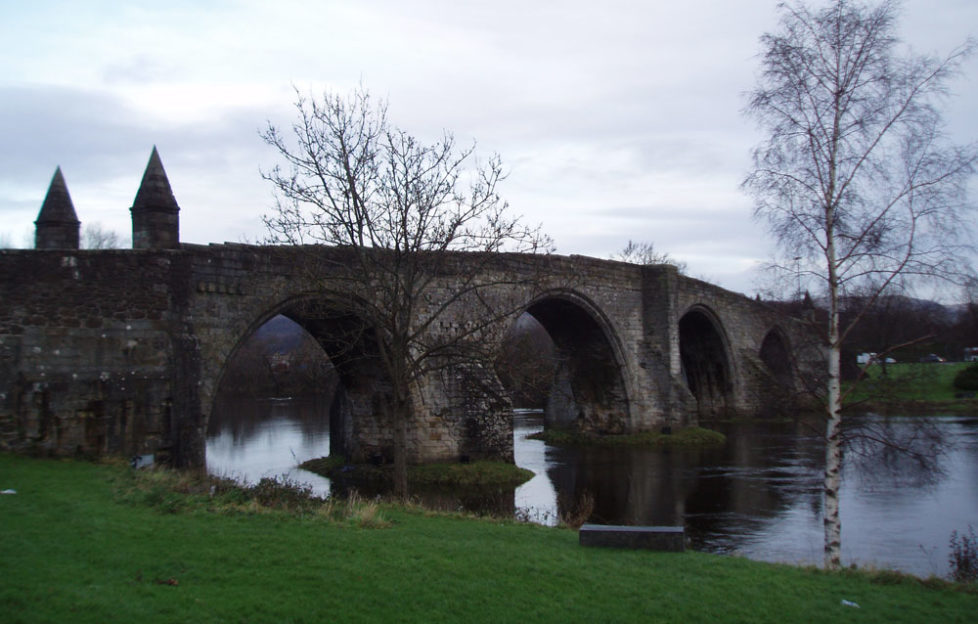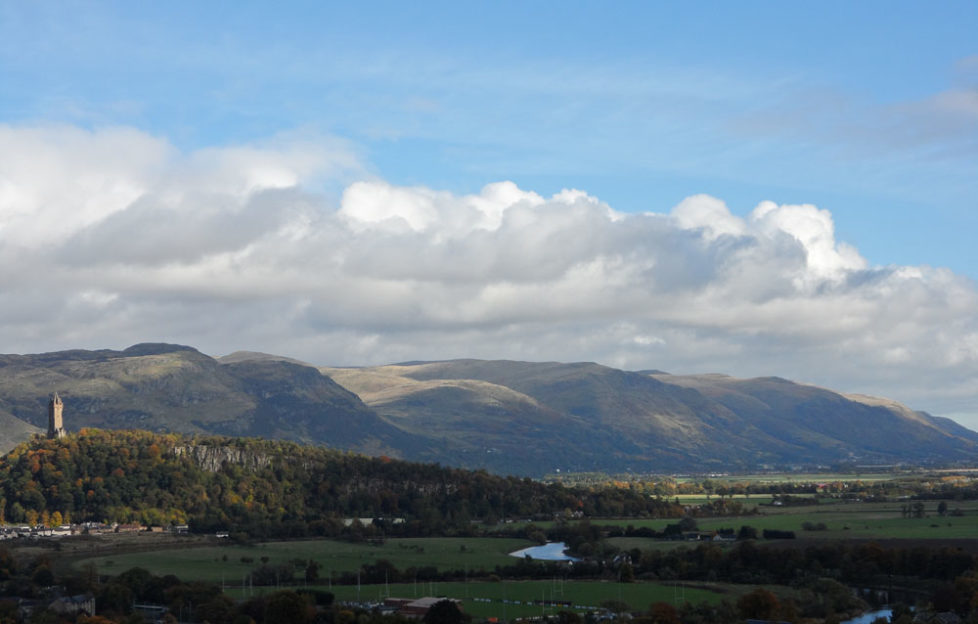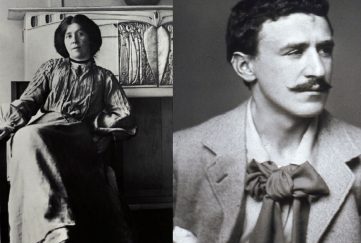Wallace Monument

The Wallace Monument stands on Abbey Craig, near Stirling
On September 11, 1297 atop the heights of the rocky promontory, the Scots army stood poised.
William Wallace and Andrew de Moray’s troops watched the farcical crossing of the English host over Stirling Bridge. They knew the time was ripe for a strike. They stormed down the Craig towards the bridge, forging their names into posterity in one of the most decisive and romanticised battles in Scottish history.
It is for this reason that the Wallace Monument stands where it does today, rivaled in its supremacy over the landscape only by Stirling Castle itself. It has attained the status of a national icon, not only for its significance to the story of Scotland but for its jaw-dropping effect on visitors approaching Stirling via road or rail.
Completed in 1869 and funded entirely by subscriptions, the monument’s striking Victorian Gothic aesthetic is complemented by excellent historical displays inside. The monument’s four levels not only tell the story of Wallace and the victory at Stirling Bridge, but of famous Scots throughout the centuries and the construction of the tower itself.
“Stirling, like a huge brooch, clasps the Highlands and Lowlands together.”
Stirling’s strategic significance to anyone hoping to control Scotland is illustrated by the diorama on the third level. It brings into crystal clarity the truth behind Alexander Smith’s observation that “Stirling, like a huge brooch, clasps the Highlands and Lowlands together.”
Perhaps the biggest draw is the Wallace Sword, supposedly once wielded by Wallace. Its pedigree, however, is the subject of no small deal of exasperation from the experts.
After ascending 264 tightly wound stone steps you emerge onto the Crown. Take in the breathtaking panorama which makes you feel as though you could keep watch over half of Scotland. On a clear day, you wouldn’t be too far off.
From the Crown, the horseshoe-shaped trap formed by the curve of the River Forth into which the English army marched in 1297 becomes immediately apparent. One can easily daydream of playing youhand at General. This is particularly true when the location of the Battle of Bannockburn, perhaps Scotland’s most decisive military victory of all time, is also visible to the southwest.
After calling on one hero at the Wallace Monument, paying tribute to another, Robert the Bruce, at the Bannockburn Heritage Centre would be a fitting conclusion to your day in Stirling.
- Stirling Bridge
Adventurer’s Guide
The Wallace Monument is two miles from Stirling railway station along Old Causewayhead Road. You can also reach it by bus on any service bound for the University, Bridge of Allan or Alloa.
Open year-round. Allow at least 1.5hrs at the monument. The Bannockburn Heritage Centre is two miles south of Stirling city centre. You can also reach it by the X39 bus to Whins of Milton. 15-20 minutes at the rotunda and statue should do the trick (free of charge). Allow up to 2hrs if you plan on entering the visitor centre where pre-booking is highly recommended.
Wallace Monument Facts
- Completed in 1869
- It’s 220ft high and cost £18,000 to build
- Funded by public subscription
- Among donors was Italian hero Guiseppe Garibaldi
- Home to the fearsome 5ft 4in Wallace Sword







